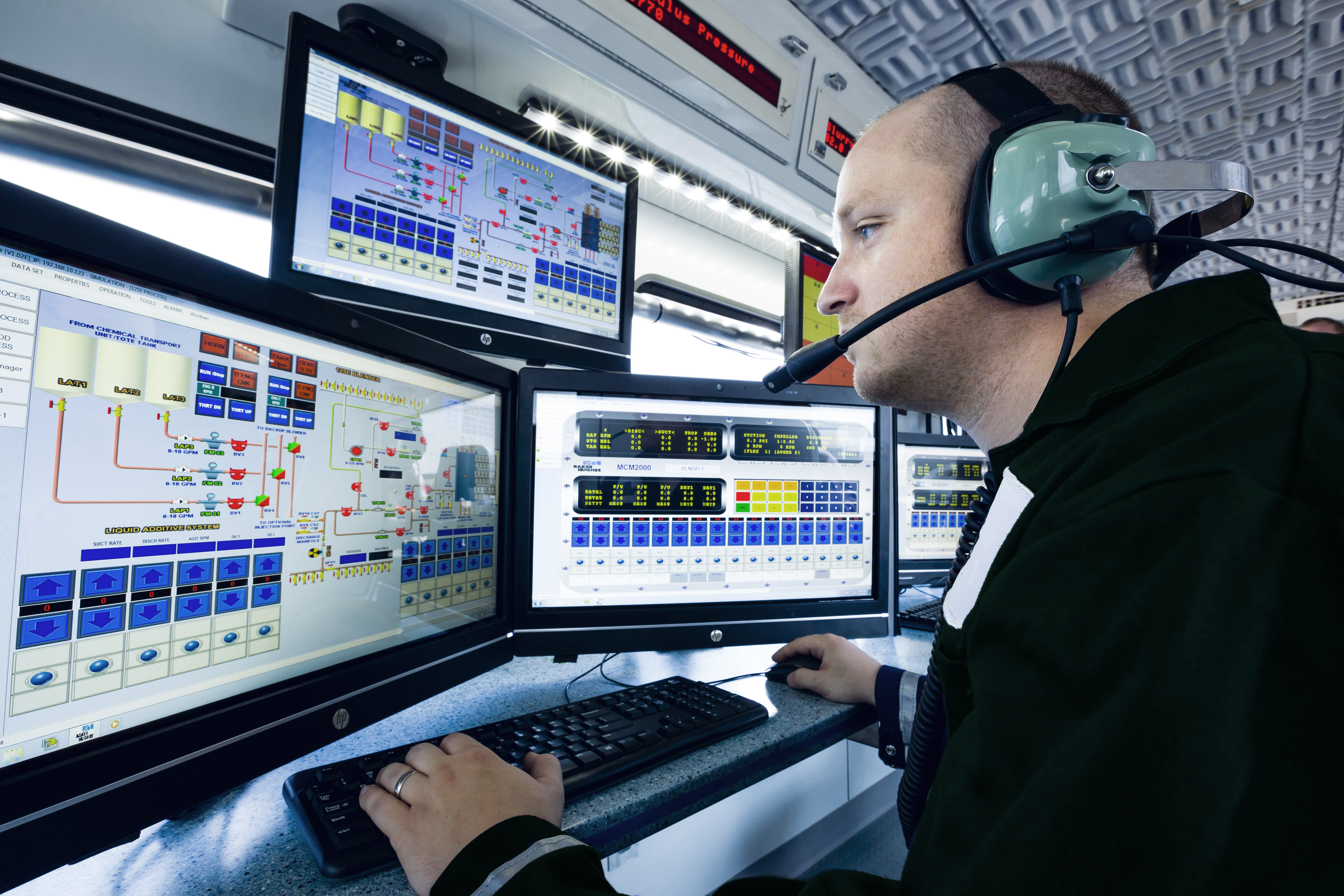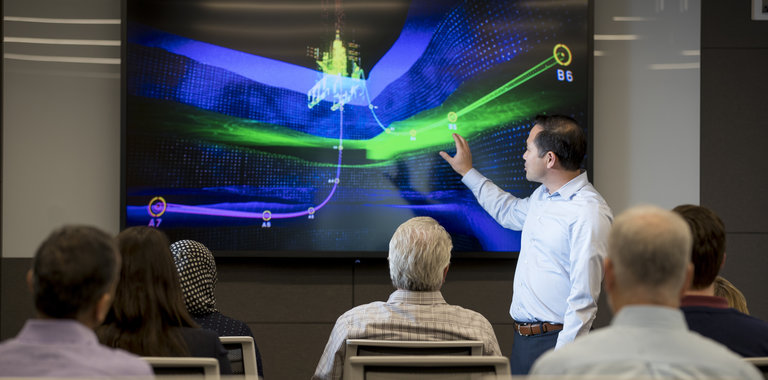The global pandemic has further catapulted the oil-and-gas industry toward transition. An alliance of technologists applies artificial intelligence (AI) to the pivotal task, achieving benefits on every front.
Among the questions Darryl Willis, Vice President of Energy at Microsoft often gets from oil and gas companies ready to invest in digitalization of their operations is: “Can we have it all?” That is: “Can we increase production, reduce costs, and reduce greenhouse gas emissions?” The answer is a qualified yes, says Willis. Achieving all three requires coordination, leveraging and integrating data from a diversity of sources and silos, and “being willing to form unusual partnerships with companies outside the industry.”
Willis, originally a geologist, ran BP’s global reservoir development, and its operations in Angola, before moving to Google Cloud as VP of Oil, Gas and Energy. He joined Microsoft just as its partnership with Baker Hughes, the established energy technology company, and C3.ai, the Silicon Valley startup that provides leading enterprise artificial intelligence (AI) solutions in a platform environment, was forming.
The three-way partnership has since applied AI to lakes of operational data sitting in Microsoft’s cloud infrastructure to solve complex problems such as fugitive emissions and fieldworker safety.
Take for instance an oil and gas company with operations in west Texas and south-eastern New Mexico. In this case, best use of digital technology means capturing not only equipment data, but weather data, satellite imaging of emissions hot spots and other relevant input. And because, “maintenance issues are typically the culprits when it comes to fugitive emissions,” says Willis, “how companies get ahead of that with monitoring that provides predictive maintenance is also instrumental, not only to increasing up time of assets, and productivity, but to reducing carbon-emissions.”
“maintenance issues are typically the culprits when it comes to fugitive emissions”
Darryl Willis, Microsoft, Vice President of Energy.
It sounds simple that well-managed machines would generate fewer emissions, but analysis of disparate data streams is akin to rocket science. The volume and complexity of data integration and then analytics to identify trends goes beyond what any human could manage. But it is precisely this analysis of complex system performance at enormous scale – say thousands of wells over 10 years – that can deliver the three-way goals of the Microsoft, C3.ai, and Baker Hughes alliance: more productivity, lower cost, and lower emissions.

Data torrents and revenue streams converge
Binu Mathew, Chief Technology Officer for Oil and Gas at C3.ai, was previously head of digital products at Baker Hughes. He transitioned to bring the company’s deep domain expertise onto C3.ai’s proven platform in a joint venture now known as BakerHughesC3.ai, or BHC3.
BHC3 Reliability™ is one of the first products out of that JV, now optimized to run on Microsoft Azure’s global intelligent cloud infrastructure. “When you look at predictive maintenance for big offshore oil platforms or in refineries, you really need to look at interactions between machines, because something that’s happening on one machine affects another one downstream. Neither one may actually fail, but together as a system, they can cause a performance issue,” says Mathew.
One of the world’s largest petrochemical manufacturers has applied BHC3 Reliability to the equipment and processes of their plants where eliminating unplanned maintenance costs could save $100 million annually. Solutions will then be scaled across the company’s 200 plants. On the road to correlated AI-driven performance analysis on this project, BHC3 data scientists first had to map the location of sensors across more than 1,000 individual pieces of equipment at the one facility, to enable identification of, say, a pressure sensor relative to a particular pump. Leveraging machine learning pipelines available on the C3 AI® Suite platform, they were able to significantly reduce manual effort and accelerate time to value with diagram parsing: a BHC3 Reliability capability to automatically map sensors to equipment across a facility with computer vision, natural language processing, and graph search techniques. The BHC3 Reliability application then ingested five unique data streams and configured machine learning models for each of the 1,000 pieces of equipment.
The scalability of the BHC3 platform, says BHC3 Reliability Product Manager, Michael Haddad, “means we’re able to ingest over 4 billion individual measurement points in a matter of weeks and within that time frame, already be configuring machine learning models and iterating very quickly to improve performance.”
''We’re able to ingest over 4 billion individual measurement points in a matter of weeks''
Michael Haddad, BHC3 product manager.
Being able to respond to anomalies in near real time to quickly reduce expenditure and increase safety levels, when it seems every cost center has already been wrung dry by traditional efficiency measures, is mandatory in the COVID-19 era.
Mathew says that Shell, which has selected C3.ai as their AI platform across the company, has “clearly stated that it can become more efficient by implementing predictive maintenance solutions, thereby increasing overall plant availability and reducing maintenance costs.”

Why it’s worth saving energy during a glut
Data, integrated and analyzed at scale by AI, can also drive many energy management benefits. “Typically, about 10% of the product that flows through gas processing facilities is consumed in energy, so if you can reduce that by, say, 10-20%, that translates into 2% of world production — you’re dealing with very large numbers,” says Mathew. Advanced AI can help facility managers gain visibility over energy use, detect anomalies, predict energy-saving opportunities and prioritize actions to reduce operational spend.
Willis says that although the oil and gas industry “is notorious for collecting data,” it only uses three to five percent of the data it collects to make such daily business decisions.” Pre-COVID, most industry players had realized the opportunities in digitalization, he says, and many were “trying to do everything themselves: build data science teams and come up with applications to solve individual problems.” But data centers are cost centers, it takes time to embed and utilize such expertise, and individual efforts have frequently resulted in duplicated solutions.
Speed is essential
Agile responses and speed to implementation are vital in an economic climate where demand for oil and gas has been abruptly halved, and the market is showing only tentative signs of recovery as operators adapt to constrained conditions. “We’re shifting to a world where the fastest companies will survive,” says Willis.
“We’re shifting to a world where the fastest companies will survive”
Darryl Willis, Microsoft, Vice President of Energy.
He cites a third-party report by a Microsoft Azure primary systems integrator which found that value creation from implementation of solutions on the C3.ai platform occurred 25 times more quickly, with no increased risk, than without the AI accelerator.
Partnerships with trusted domain experts have become key to realizing the potential of data to generate savings and AI to recognize new pathways to success. Baker Hughes, C3.ai, and Microsoft might previously have brought parts of the solution to the oil-and-gas table. Now their combined strengths mean that an oil and gas company – from the super majors and national oil companies to small independents – has immediate access to end-to-end AI solutions for areas like predictive maintenance, says Willis: “We’ve got something, its capabilities are proven, and you can use it right away.”
For more information on digital transformation, visit the capabilities page.
Energy Forward Stories
Sign up to stay up to date on the latest innovations and people shaping the future of our industry.




